Subtleties of planting hyacinths in autumn

The most colorful and unusual bulbous plants are hyacinths, they are distinguished by bright, dense inflorescences of a cylindrical or conical shape. The flowering period of hyacinths begins in early spring, after which the ground part of the flower dies off and the bulb is dormant in warm ground, forming new shoots with inflorescences, leaves and children. Such bulbs need to be dug up annually in the summer and prepared for planting in the fall, in this hyacinths differ from other ornamental plants, which are usually planted in spring.
Optimal disembarkation time
Since hyacinths have an active period of development in the spring, it is recommended to plant them in open ground in the fall. This helps to strengthen the bulb, the plant gains strength and germinates well in spring. Planting hyacinths in the fall has its own specific dates, which must be adhered to. It must be performed from the end of August to October, when the soil temperature is at least + 5 ... 10 ° С.

In addition, autumn planting also depends on the climatic conditions of each region. For example, in the Urals and Siberia, it is held from late August to early September, in the middle zone and the Moscow region - in the second decade of September, in the southern regions - in October. If you plant an ornamental plant earlier (without taking into account these terms), then the flower will begin to germinate quickly, and the sprouts will freeze during the first frost.
And if you plant hyacinth too late, the bulbs will not have time to accelerate their growth and will die.
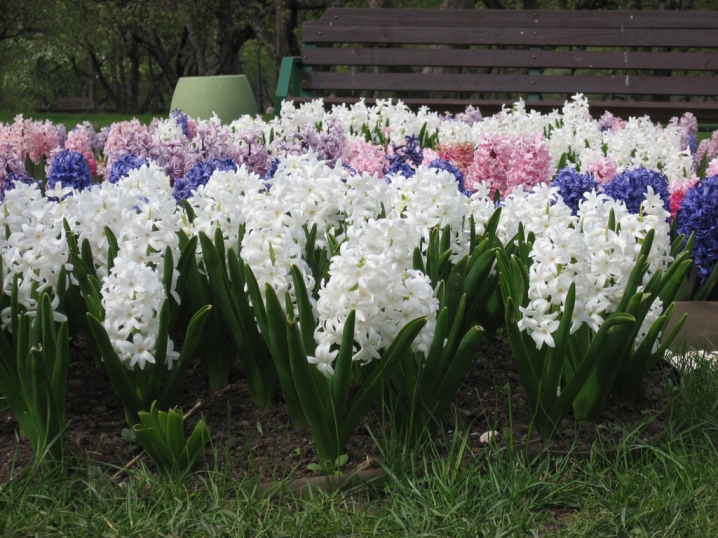
If immediately after planting the bulbs there was a sharp cold snap, then the soil should be covered with a layer of dry foliage or spruce branches. Many experienced gardeners use the lunar calendar to plant hyacinth correctly. According to the lunar cycle, the most favorable period for the autumn planting of a plant is September (3-7, 18-23), October (2-6, 18-20, 28-30).
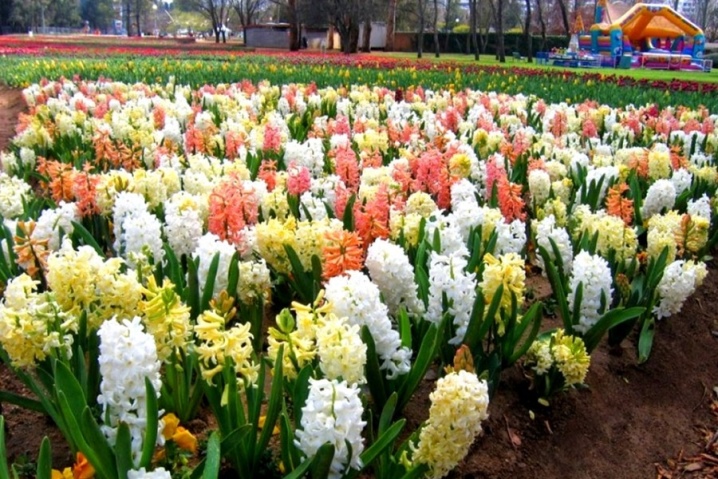
How to plant?
To enjoy the beautiful flowering of hyacinths in the garden, you need to properly plant the plant, having previously selected a suitable planting site, bulb and soil. Since in their homeland they prefer to grow in dry and warm climates, it is recommended to plant them in areas well-lit by the sun, which are protected from drafts. They do not like these decorative flowers and soil, where water constantly stagnates, plants in such conditions, due to the thin skin, begin to quickly fester and die. You can also plant flowers under trees, as their flowering period usually ends before dense foliage appears. At the same time, do not forget that trees can suck out all useful substances from the soil, which will negatively affect the growth and formation of the plant.

These bulbs look good on flower beds lined with plastic bottles. To create an original landscape design on the site, it is recommended to plant hyacinths with primroses such as bulbous irises, crocuses, daffodils and hazel grouses. They can also be placed next to tulips.
If there is no garden plot, then hyacinths can be grown in small containers or garden pots on a balcony or windowsill.

After the planting site has been selected, it is necessary to proceed with the immediate preparation of the soil.
- First, they dig the earth to a depth of at least 40 cm and apply organic fertilizers in the form of peat, humus or compost. Additionally, potash fertilizers and superphosphate should also be added to the soil.In the case when the soil on the site is clayey (heavy), it must be mixed with sand, and if it is acidic, with lime flour. In no case should fresh manure be introduced for digging.
- The next step is the selection and preparation for planting the bulb. It should be healthy, clean and dry in appearance. In the presence of visible damage, soft areas and dents, the planting material is discarded. Experienced gardeners recommend purchasing bulbs with a diameter of 4-5 cm.If you take 2-3 cm specimens for planting, they will give few flowers, while large 6-7 cm bulbs are considered too old, and they will have to be constantly updated.
- Before planting in open ground, the bulbs should be treated in special solutions or potassium permanganate, this will disinfect them. For this, the planting material is placed in a container with a solution and kept for 20-30 minutes. After that, they should be well dried.
- Next, proceed to the direct planting of the bulbs. The first step is to make drainage from the sand (with a layer of 2-3 cm) at the bottom of the hole. The planting depth of bulbous plants should be one third of their height. For example, if the height of the bulb is 4 cm, then it is deepened by 12 cm, 5 cm - by 15 cm. In areas with light soil, the deepening can be made larger, and with heavy soil, on the contrary, it is less. It is also important to keep the distance between the bulbs during planting, which usually corresponds to the planting depth. That is, a distance of 10-20 cm should be made between future flowers (it all depends on the size of the bulbs).

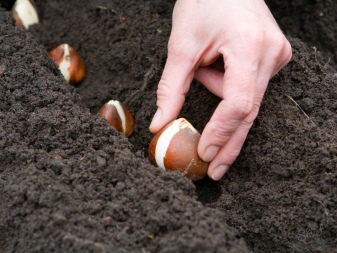
The planting ends with the fact that the bulbs are placed on the sand and covered with sand from above (so as not to rot), then with fertile soil. The landing site is watered abundantly with water. In the event that the plant is planted in moist soil immediately after rain, then watering is not necessary. To protect the flower from drying out the soil, mulching with sawdust or peat is carried out.
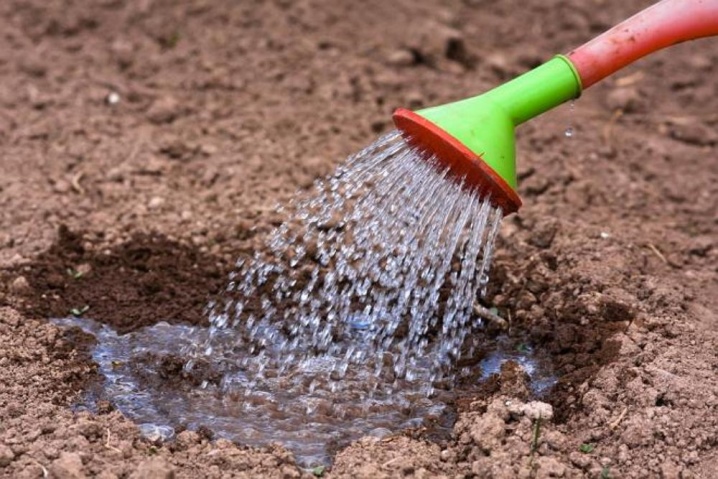
When to dig up and how to store the bulbs?
After the hyacinths have withered and dried (but not completely), you can start collecting their bulbs for subsequent planting in the fall. This period is approximately in late May and early June, 3 weeks after flowering. The bulbs must be carefully dug, stepping back from the bush by 10-15 cm. Then they are washed in warm water and the substandard is immediately rejected. Before storage, future planting material should be disinfected in such means as Fundazol, Dachnik or Maxim. An ordinary pink solution made from potassium permanganate is also suitable for these purposes.
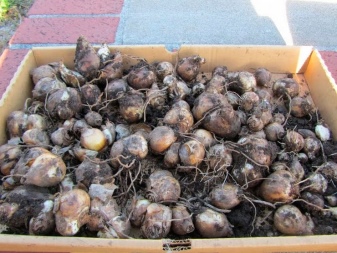
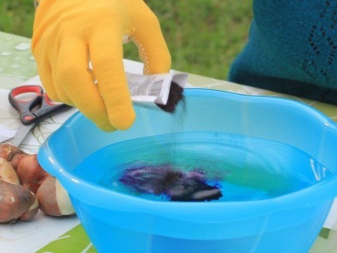
The processed bulbs are dried in a place where the direct rays of the sun do not penetrate, and before laying them for storage, they are wrapped in newspaper or peeled and folded into containers, boxes, bags. Storage of planting material should be carried out in a dry and warm place. It is allowed to store the bulbs first at a temperature of +25 to + 30 ° C, then lower it to + 17 ° C.
In the event that babies were found on them while digging the bulbs, they can be separated and also used in the propagation of hyacinths. Such babies survive all summer and then are planted in the fall in open ground.
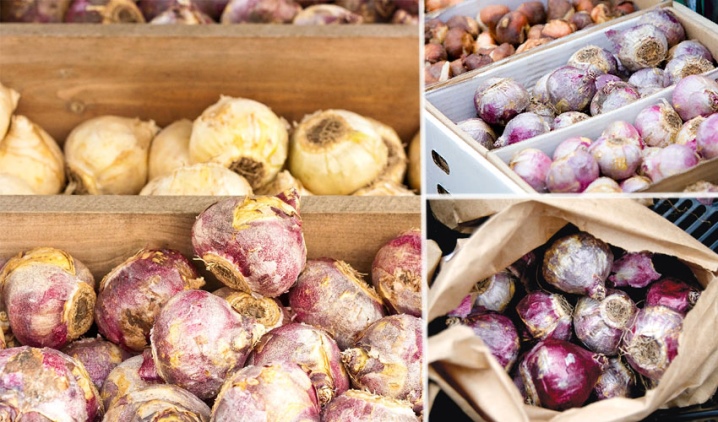
Useful Tips
Hyacinths are considered the most favorite plant of gardeners, so they can often be found in summer cottages. The popularity of decorative flowers is due to their unusually bright colors and the shape of the inflorescences. To grow a healthy and beautiful plant on your own, you should take into account the recommendations of experienced gardeners.
- The main thing when planting plants is considered to correctly calculate the depth, since if the deepening is insufficient, the bulb will freeze and quickly die, and if it is too much, the vegetation process will be delayed, and the flower will not be able to please with exuberant color. In this case, for large bulbs, you need to prepare a spacious and deep hole.
- Bulbs cannot be purchased for planting, the quality of which raises even the slightest doubt.If this is not taken into account, then you can buy a diseased plant, which in the future will infect the entire flower garden.
- If the purchased bulbs are of different sizes, then the largest specimens are planted first, then medium and small ones.
- When planting the bulbs, do not forget about the sanding in which it is placed. This will save the flower from decay. This is especially true for areas characterized by high soil moisture. A layer of sand is covered with fertile soil, which must be compacted.
- Despite the fact that hyacinths do not like moisture, they need to be watered both immediately after planting and before the first cold weather. Before the onset of frost, the planted bulbs are covered with a layer of dry foliage, they will warm the ground well and save the plant from the cold.
- If the site does not fit the flower, it needs to be transplanted to a new one. In this case, the onion is dug up and, without any preparation, is simply planted in a new place.
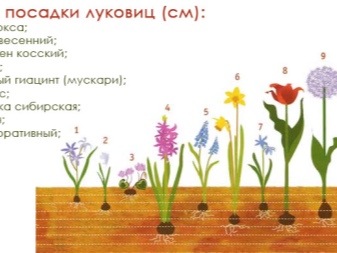
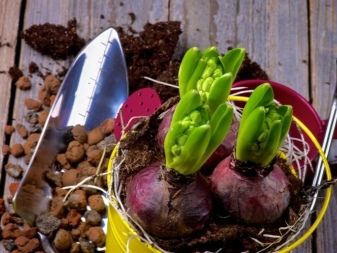
For information on how to plant hyacinths in the fall, see the next video.







































































































The comment was sent successfully.